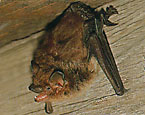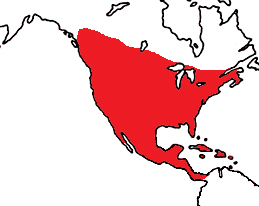|
Big
Brown Bat
(Eptesicus fuscus) #58-427 |
|
Physical
characteristics and distribution
|
|
Big
Brown Bat Eptesicus fuscus They
emerge at sunset, having a slow, ponderous flight and feed closer
to the ground than bats with a more quick and erratic flight.
Their main diet consists of insects, making them beneficial
to humans. |
|
Description
of the brain
|
|
Animal
source and preparation
|
|
All
specimens collected followed the same preparation
and histological procedure.
|
Other
Related Resources (websites and publications)
List of Specimens | Explore Collections | Brain Sections | Brain Evolution | Brain Development | Brain Circuitry | Brain Functions | Location and Use | Related Web Sites | Contact Us | Search MSU Database | Personnel | Home


